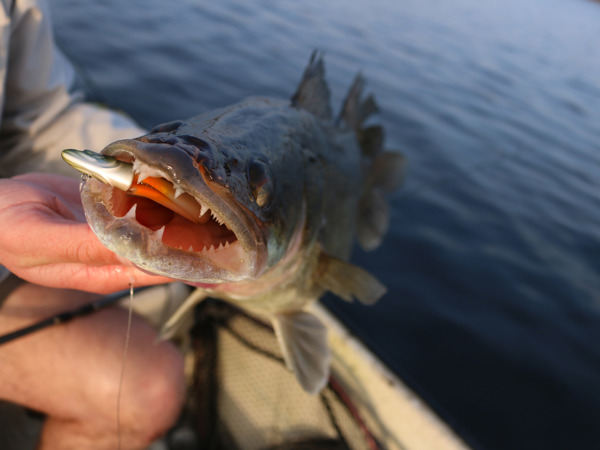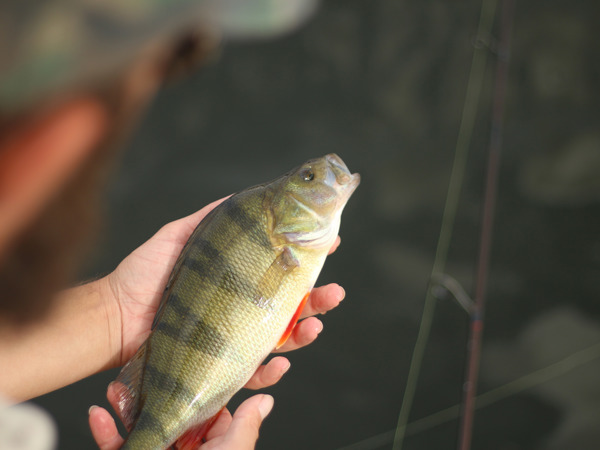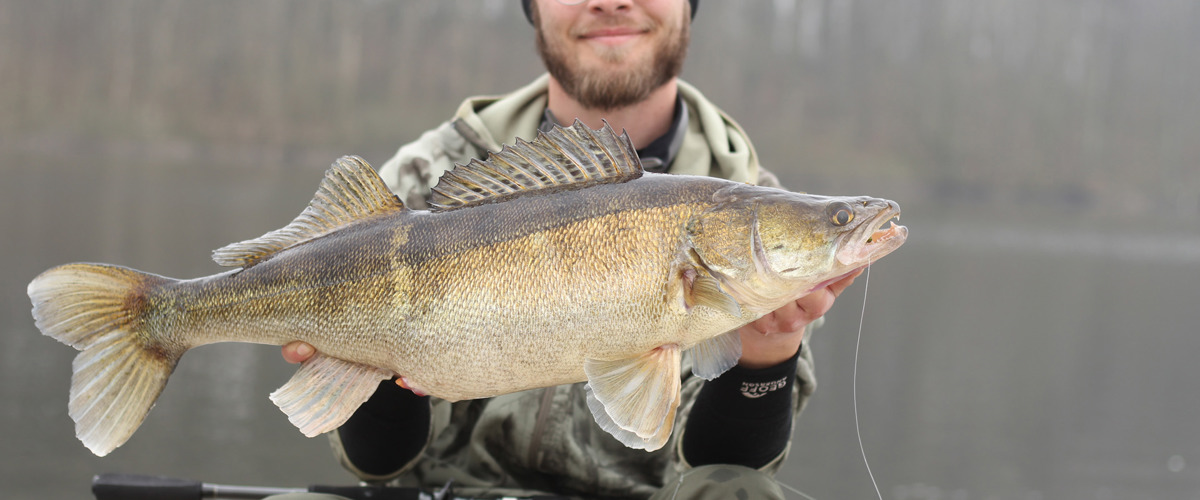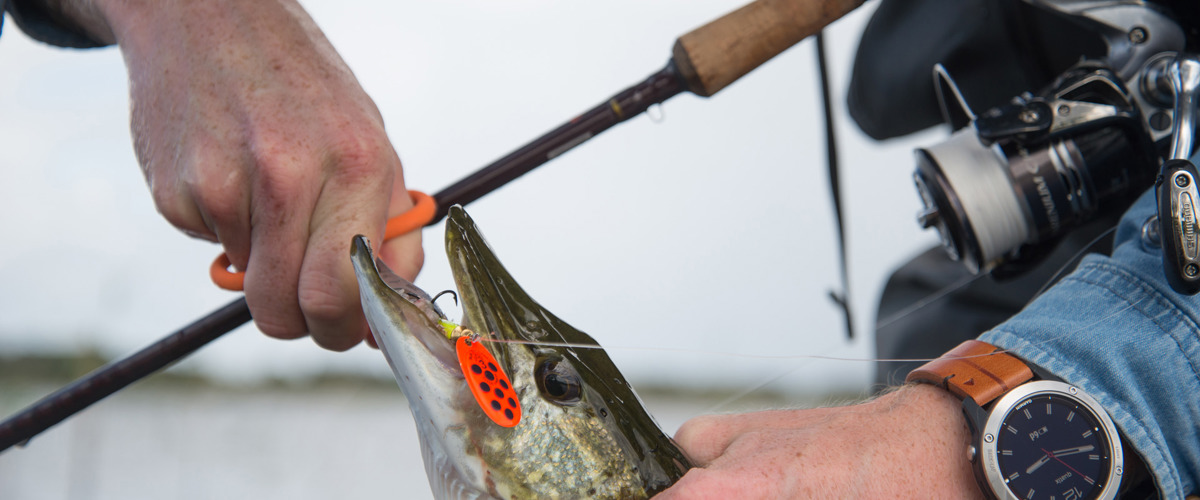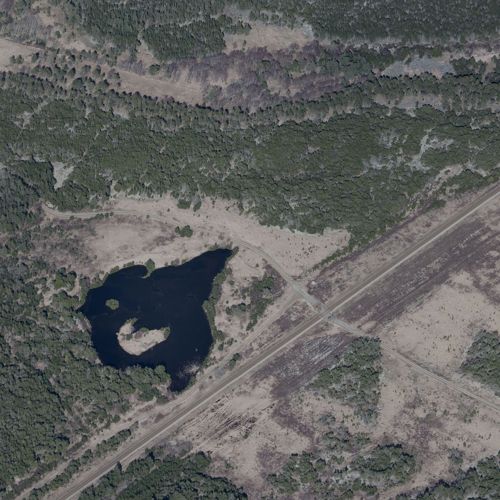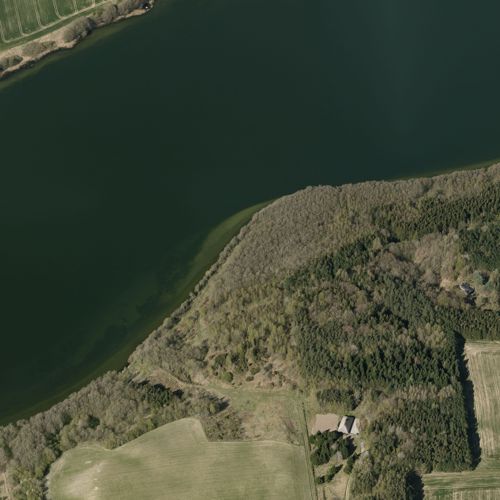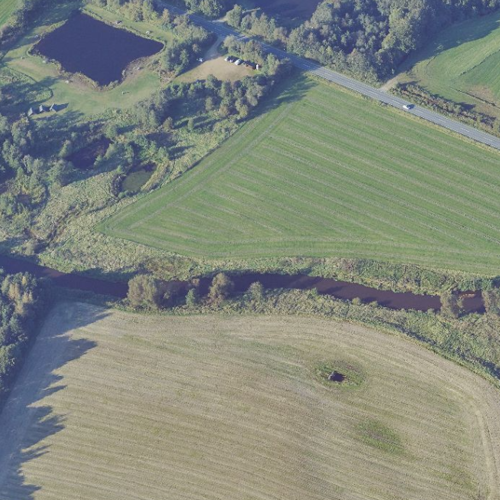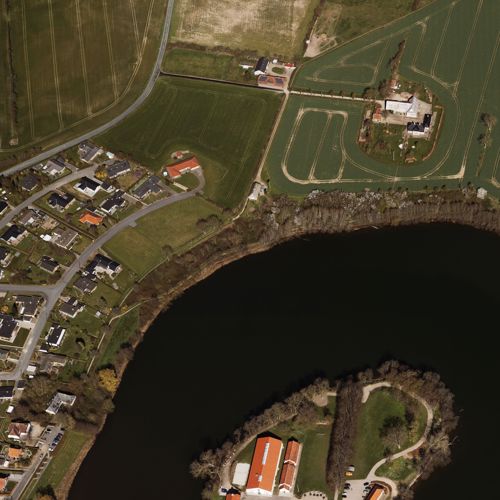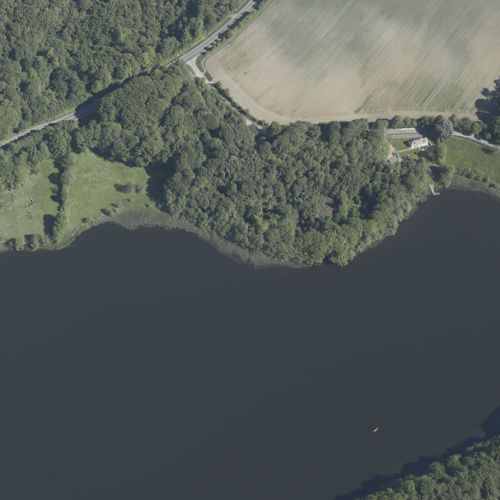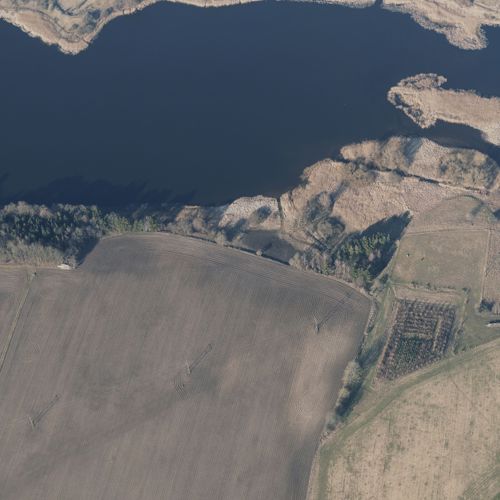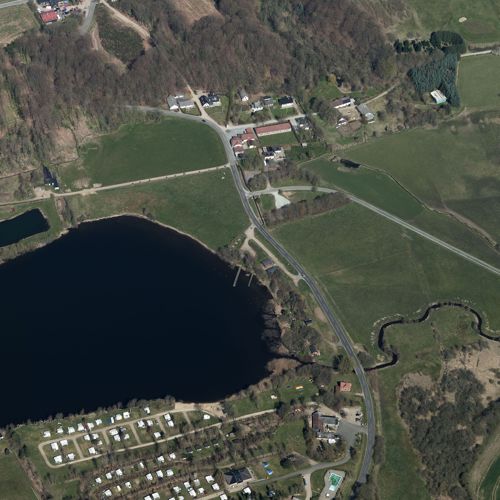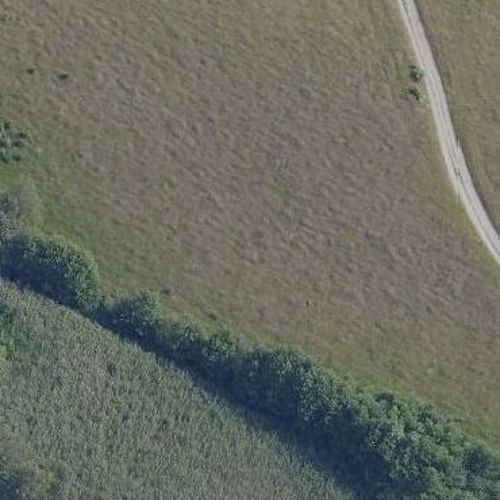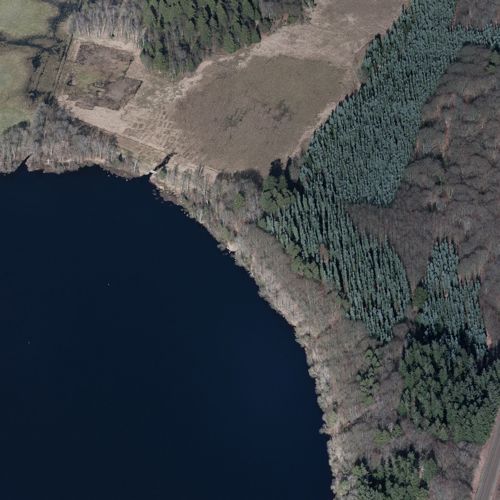The pike is the largest fresh water predatory fish in Denmark. It has backwards teeth, which it uses to catch its prey. If the pike clamps down hard on its prey, the prey seldom escapes the jaws of the pike.
It has different hunting strategies. A favorite is lying in wait in vegetation, where it is camouflaged with its green and yellow dots. When the prey fish comes along, the pike makes a surprise attack, shooting forward from its hideout with surprising speed and sucks the prey into its mouth with a vacuum.
The pike is found in most Danish lakes, as the pike doesn’t demand much as far as the quality of water goes.
It spawns in April, making this month closed season for pike in fresh water. It spawns in low waters, which is why you often find pike in low waters just before or after it spawns.
The male seldom reaches over 80 centimeters of length while the female can reach up to 150 centimeters and a weight up to 30 kilos. The pike mainly lives off fish, but sometimes frogs, toads, and even the odd surface-dwelling duckling as well.
The official Danish record: 22.16 kilograms.
The zander is whimsical as well as the second-largest predatory fish in Danish fresh water. It is related to the perch, but grows significantly longer than its cousin. They both share the spined dorsal fin, this being less obvious on the zander. The zander has a pair of long fangs used to clamp down on its prey by which it has earned the nickname “the vampire”.
It prefers lakes with warm and murky water, where its brilliant eyesight enables it to sneak up on its prey. It primarily hunts alone in open waters in the larger lakes of Denmark and lives exclusively off different prey fish often consisting of roach, bleak, smelt, and stickleback. The zander most often spawns in May, which is closed season for zander in fresh water. It spawns at bluffs and peaks in lower waters and can often be found here before and after spawning.
In Denmark, the zander can reach 95 centimeters of length and a weight of as much as 10 kilograms. But it is increasingly rare to catch a zander above 90 centimeters and 7 kilograms. This is why a zander above 5 kilograms is recognized as a trophy fish among anglers, even though catching any zander is an accomplishment in itself.
The official Danish record: 11.00 kilograms.
The perch is the most diverse predatory fish of the lakes. It is found in 96 % of the lakes in Denmark. They are practically everywhere and are great survivors. Their numbers give anglers plenty of opportunity to find a local spot with perch.
Clear water lakes are often dominated by predatory fish that control the number of individuals of the prey fish by way of their food intake. The perch is the most important predator in Danish lakes because it eats the most prey fish. This means that the perch can have a significant regulatory effect on the density of the species of prey fish including its own spawn, which it eats just as eagerly as the spawn of other species. By regulating the species that murk the waters, the perch plays a deciding role in the lake environments.
The perch actively seeks out its prey. Mosquito larvae and the like are gathered individually from the bottom. The hunt for prey fish is often conducted in small schools attacking in unison. The perch attack the school of prey fish from beneath to lead the prey towards the surface, where the possibility of escape diminishes. When more perch attack a school in unison, the possibility of escape for the prey fish is diminished further. This hunting technique has also enabled gulls to hunt for prey fish more easily by way of their proximity to the surface.
Research has shown that the prey fish under threat of being eaten by perch become more sedentary. This points to the movement of the prey as an important facet in the perch finding its prey.
Most of the caught perch consist of smaller individuals, but it actually is able to reach a respectable size. It seldom grows beyond 2 kilograms and 50 centimeters, but perch beyond 1 kilogram and 40 centimeters are recognized as trophy fish among anglers.
The official Danish record: 2.785 kilograms.
 Fishing spots
Fishing guide
Associations and water care
Information and rules
Explore Denmark
Fishing spots
Fishing guide
Associations and water care
Information and rules
Explore Denmark

